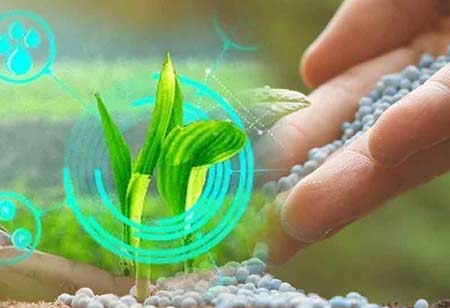Thank you for Subscribing to Agri Business Review Weekly Brief
Technologies that are Changing the Landscape of the Agriculture Industry
AgTech has a wide range of uses, but the basic goal is to grow more food using less land and fewer inputs.

By
Agri Business Review | Friday, June 24, 2022
Stay ahead of the industry with exclusive feature stories on the top companies, expert insights and the latest news delivered straight to your inbox. Subscribe today.
Traditional farmers and indoor growers both use a variety of technologies today to improve the efficiency of their operations.
Fremont, CA: AgTech has a wide range of uses, but the basic goal is to grow more food using less land and fewer inputs. AgTech is driving supply chain innovation, but it's not just for show. This is the key to developing a more sustainable farming method capable of meeting the challenges ahead, as well as a safer, more transparent food system.
Technologies changing the landscape of the agriculture industry are:
Smart farming
Farm automation is a term that refers to technology that makes farming more productive by automating the crop or livestock production cycle. Drones, autonomous tractors, robotic harvesters, automatic watering, and seeding robots are examples of robotic innovation. In vertical farming, automatic watering and robotic harvesters are already commonplace. The primary purpose of farm automation is to eliminate easy and repetitive tasks. However, it also helps to address concerns including labor shortages, farming's environmental effect, and fast-changing customer preferences.
Blockchain
The primary aim of blockchain is to increase the transparency and efficiency of supply chain procedures and food traceability, as well as to address concerns like food fraud. Because of the perishable nature of the product, which can have a severe impact on people's lives, food traceability is always at the forefront of food safety issues. In many circumstances, the present food ecosystem communication architecture is very manual and time-consuming, making it subject to delays, inefficiencies, and blunders. Due to the nature of blockchain technology, information is visible to all participants in the system, and its truth is verified and cannot be altered.
Advanced greenhouses
The greenhouse sector has progressed from small-scale research and development facilities to large-scale direct competitors of land-based traditional food producers. The greenhouse vegetable industry's global data market is worth more than $120 billion, as useful insights assist producers in saving costs and enhancing revenues. The greenhouse business is growing like never before, thanks to recent technology developments and forecasts from the Food and Agriculture Organization that suggest that food output would need to be increased by 70 percent by 2050 to feed 9 billion people. To capitalize on the growing demand for local food year-round, successful greenhouse enterprises have set up their facilities near metropolitan centers.





